Devon Great Hall 1

Introduction
Hi, and welcome to the Oklahoma History Center! We are so pleased that you have chosen to spend time with us exploring Oklahoma’s unique history and culture. You probably noticed the airplane hanging in the Devon Great Hall when you walked in. This replica of Wiley Post’s airplane, the Winnie Mae, is iconic to our building and serves as only one example of how Oklahomans have contributed to world history. Post, who grew up in Oklahoma, was the first person to fly solo around the world. He also designed and used the first pressurized flying suit, which was a precursor to astronauts’ space suits.
This audio tour features highlights of the museum collections; there are at least five points in each of the five galleries, and some for our outdoor exhibits. Look for the QR codes or website link on stickers located throughout the galleries.
This program is sponsored in part by Oklahoma Humanities (OH) and the National Endowment for the Humanities (NEH). Any views, findings, conclusions, or recommendations expressed in this program do not necessarily represent those of OH or NEH. We would also like to thank French, Spanish, and German professors Dr. Manna, Dr. Bird, and Dr. Nollert from the University of Central Oklahoma for translating. Now, let’s get started!
Inasmuch Gallery 1

Audio point: Corncob birds
Crossroads of Commerce is an exploration of Oklahoma’s economic development divided into five time periods marked by large TV screens with a brief introduction by an Oklahoman. The stories in this exhibit highlight some of Oklahoma’s greatest entrepreneurs and how the companies they built continue to sustain our state.
The objects in this case illustrate what would have been found in a Wichita grass house before contact with French traders. The toy bird figures hanging from the twisted branch are made of corn cobs with small feathers attached to the sides and end. They would have been hung from the rafters inside a grass house. Grass houses were common to Wichita culture between 1750 and 1820 and were constructed of cedar poles and tall grass bundles that rose to a smoke ring at the top of the structure. Because of their location, the corn cob birds would move as heat rose from a central hearth. They were also hung from cradleboards. According to Wichita history, the gift of corn was bestowed to the tribe by the spirits of the first man and woman—Morning Star and Moon.
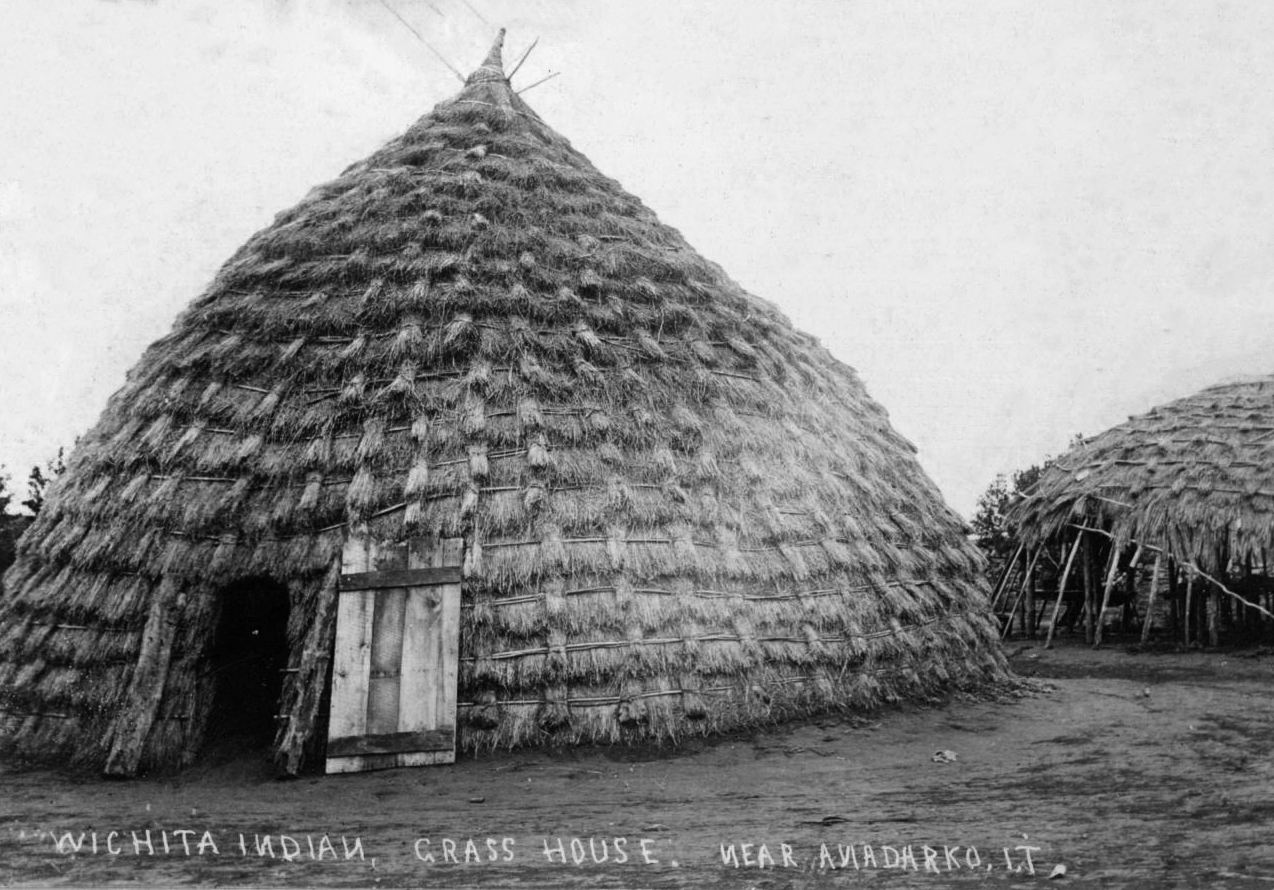
Wichita grass house near Anadarko, Indian Territory c. 1890 (15698, Ruth Mohler Collection, OHS)

Audio point: First shopping cart and first parking meter
Sylvan Goldman introduced the first shopping cart in 1937 at his Humpty Dumpty supermarket chain in Oklahoma City. Goldman based his design on a wooden folding chair. He later manufactured the carts at the Folding Carrier Corporation. The invention did not catch on immediately. After hiring models to push his new invention around his store and demonstrate its utility, his folding-style shopping carts became extremely popular.
Next to the original shopping cart is the first parking meter, also invented by an Oklahoman, Carl C. Magee, who served as Chair of the Traffic Committee for the Oklahoma City Chamber of Commerce. The world’s first parking meter, Park-O-Meter No. 1, was installed on the southeast corner of First Street and Robinson Avenue in Oklahoma City on July 16, 1935. This invention helped to solve parking congestion, create revenue for the city, and stimulate growth downtown. People who worked downtown were taking up prime parking locations in front of retail stores; the parking meter encouraged those workers to park elsewhere, giving shoppers access to better parking. In 1913 there had been an estimated 3,000 cars in Oklahoma, and by 1930 there were 500,000, most of which were registered within Oklahoma County! Did you know that the charge for parking was only five cents per hour in 1935?
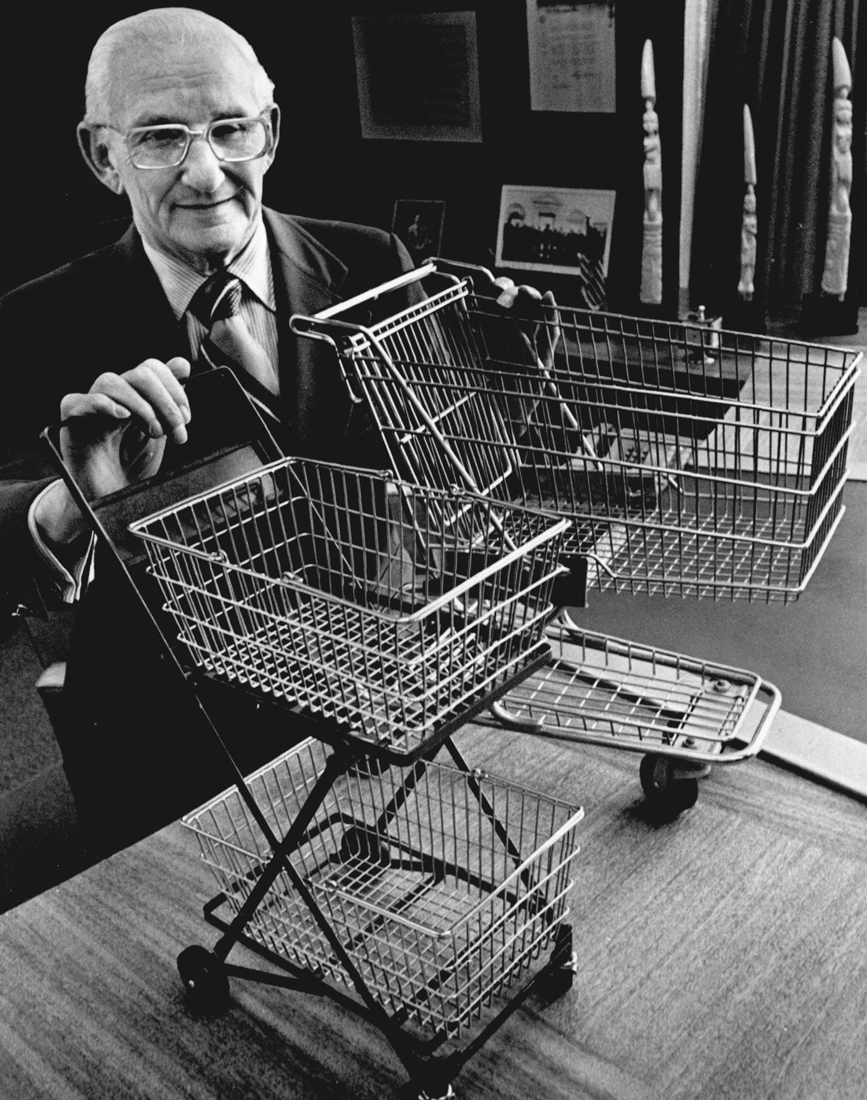
Sylvan Goldman, 1976 (2012.201.B0223.0528, Oklahoma Publishing Company Photography Collection, OHS)
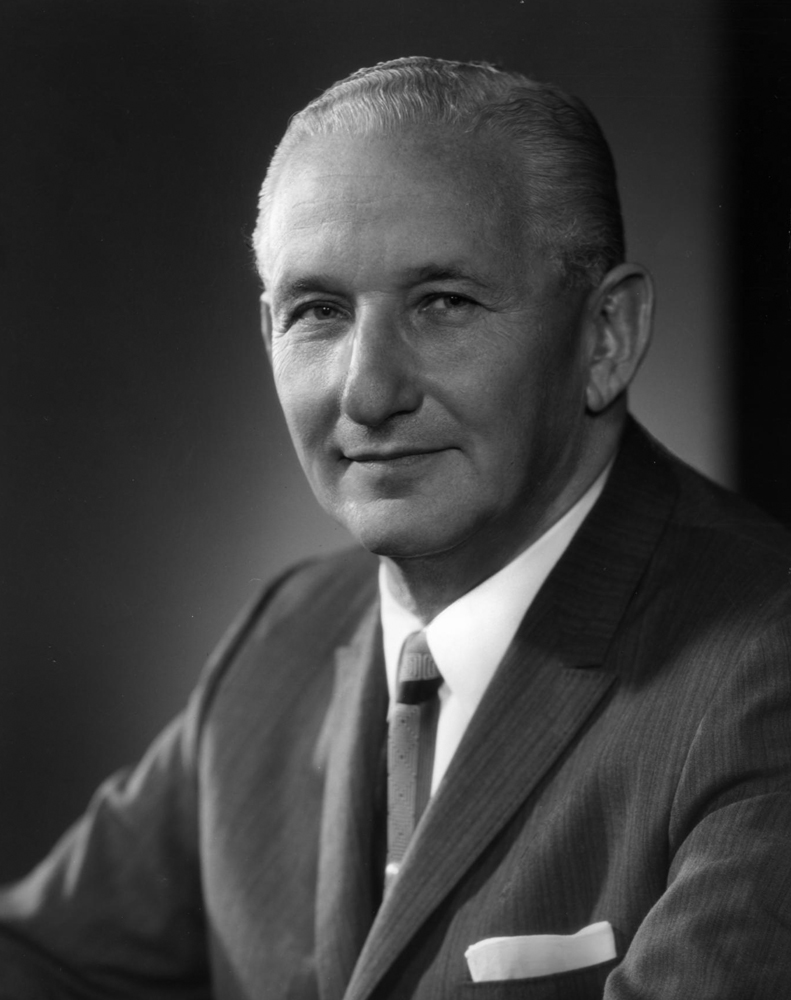
Sylvan Goldman (20699.73.80.1, Sam Flood Collection, OHS)

Audio point: Sonic Drive-In and Dr. Nazih Zuhdi
The development of highways, including Route 66, that passed through Oklahoma, presented an opportunity for businesses to draw in travelers. Sonic Drive-In was opened by Troy Smith in Shawnee, Oklahoma, in 1953, but was originally called the Top Hat Drive-In. Just a year after opening, he added the intercom system, a shelter for the cars, and carhops on roller skates to deliver food directly to the customer in their vehicle. Each customer received a mint with their order, a tradition to remind customers that they were “worth a mint.”
The unusual pants you see here list the names of the members of the Board of Directors of Sonic, Inc., in 1973. The jacket was worn by Sonic carhops in the 1970s.
Just to the left of the Sonic Drive-In exhibit, you will learn about pioneering cardiovascular surgeon Dr. Nazih Zuhdi who made Oklahoma his home and performed the first heart bypass surgery in Oklahoma on January 8, 1959.
In this exhibit area you will see an artificial bypass heart; it is the only surviving example of its type in the world. In 1963 and 1964, Baptist Hospital supported the work of Dr. Zuhdi and his team in the development of a ground-breaking mechanical bypass heart. Engineer and colleague retired US Navy Lieutenant Commander Clark Richie, worked closely with Dr. Zuhdi in developing the engineering aspects of this successful bypass heart, now known as the Zuhdi-Richie Bypass Heart.
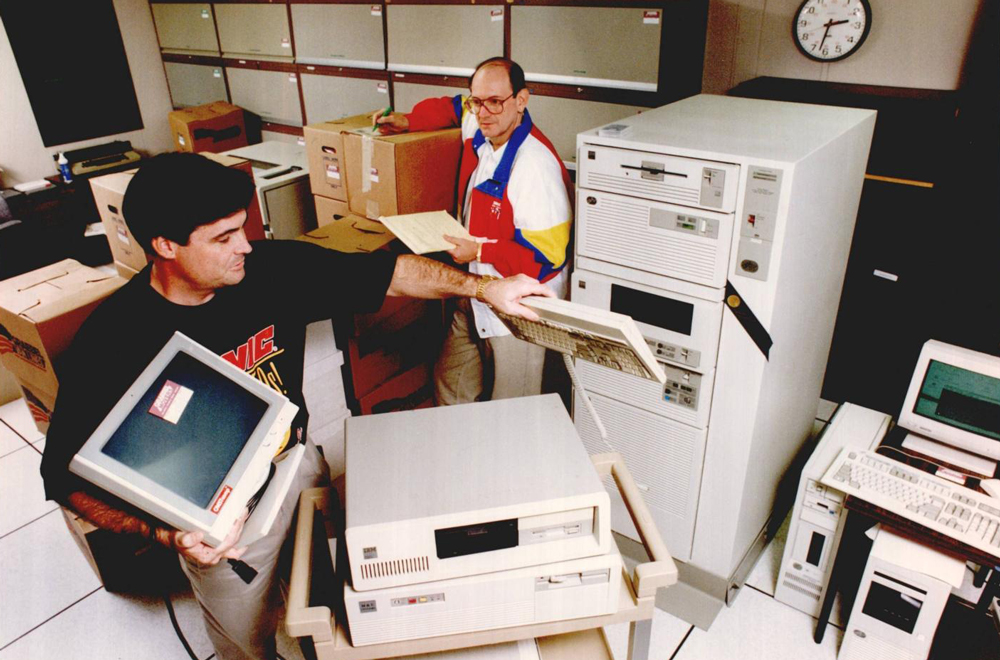
Staff moving equipment to new headquarters, 1994 (2012.201.B0967.0049, Oklahoma Publishing Company Photography Collection, OHS)
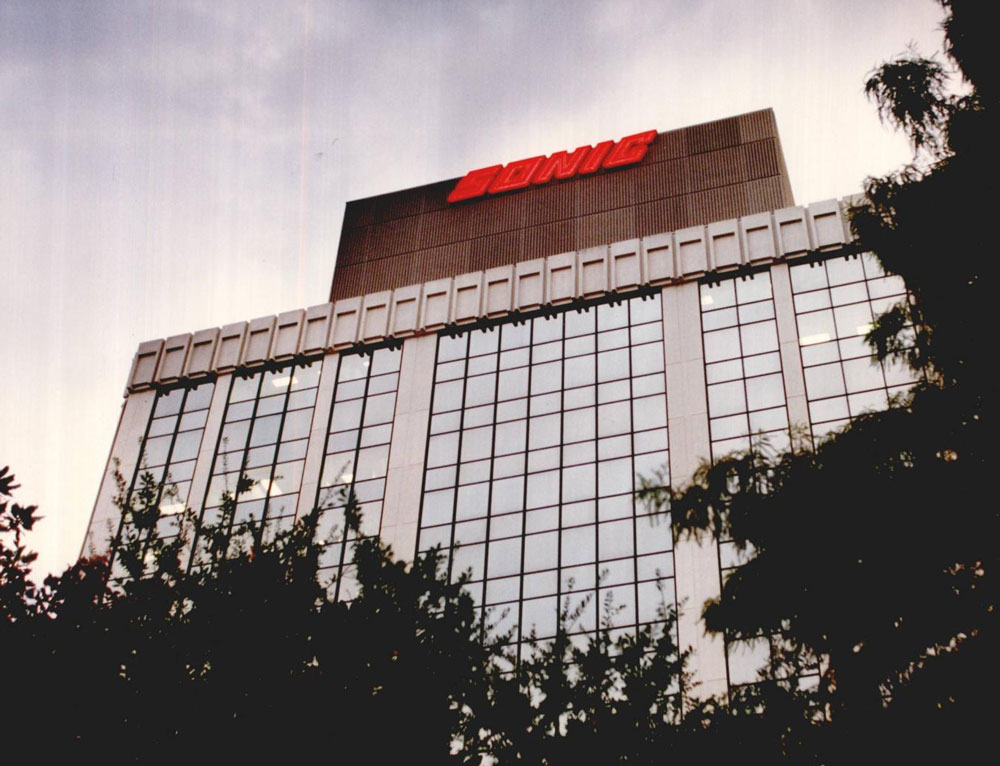
Sonic headquarters in 1994 (2012.201.B0967.0047, Oklahoma Publishing Company Photography Collection, OHS)
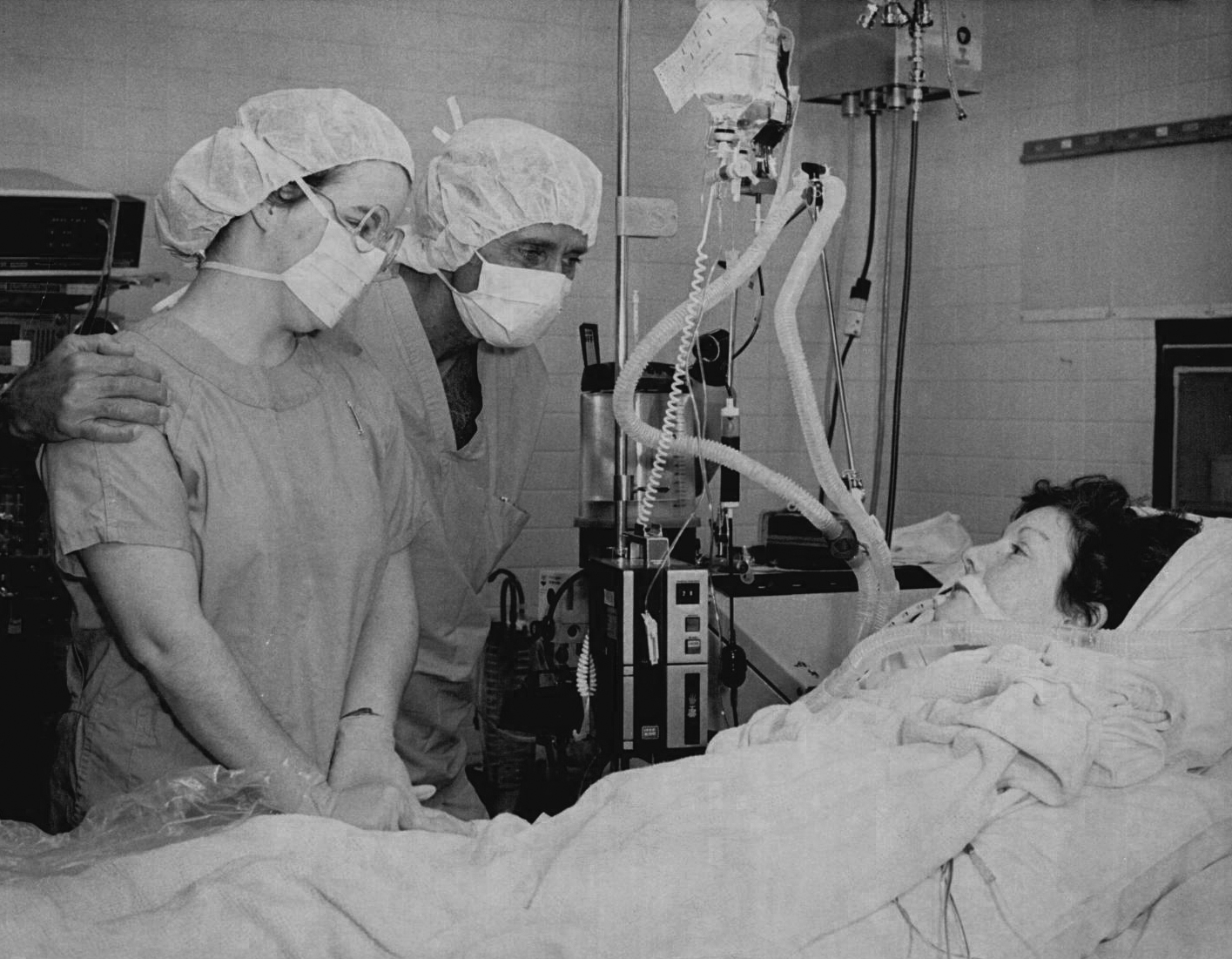
Dr. Nazih Zuhdi visits Nancy Segars Rogers, Oklahoma's first heart transplant patient, 1985 (2012.201.B1103.0135, Oklahoma Publishing Company Photography Collection, OHS)

Audio point: Kilgen Organ
Oklahomans found many ways to succeed in their quest for consumers. One way included enticing customers through radio and TV. The Kilgen Organ is one example.
This organ was installed in 1936 in the new studios of WKY Radio located in the Skirvin Tower building in downtown Oklahoma City. The cost of the organ in 1936 was $33,000, which would be more than $600,000 today! One of WKY’s most popular broadcasts aired every night at 10:45 p.m. and featured organist Ken Wright. His first radio performance was on April 13, 1936.
This model is the Kilgen Opus 5281 theatre-style pipe organ. It was manufactured by the George Kilgen and Sons Company of Saint Louis in 1935. While they come from the same roots, the theatre organ is quite different from a church or classical organ. Theatre organs were used in the 1920s and 1930s to accompany silent movies with effects for comedy and drama. Theatre organs are generally louder, and their pipes sound like musical instruments, such as trumpets and saxophones, with special effects like drums, bells, and whistles. If available, you can hear just a few of the sounds the organ can make by using the interactive next to the organ.
The Oklahoma Historical Society partnered with the American Organ Institute at the University of Oklahoma to restore the organ and create four concerts annually.
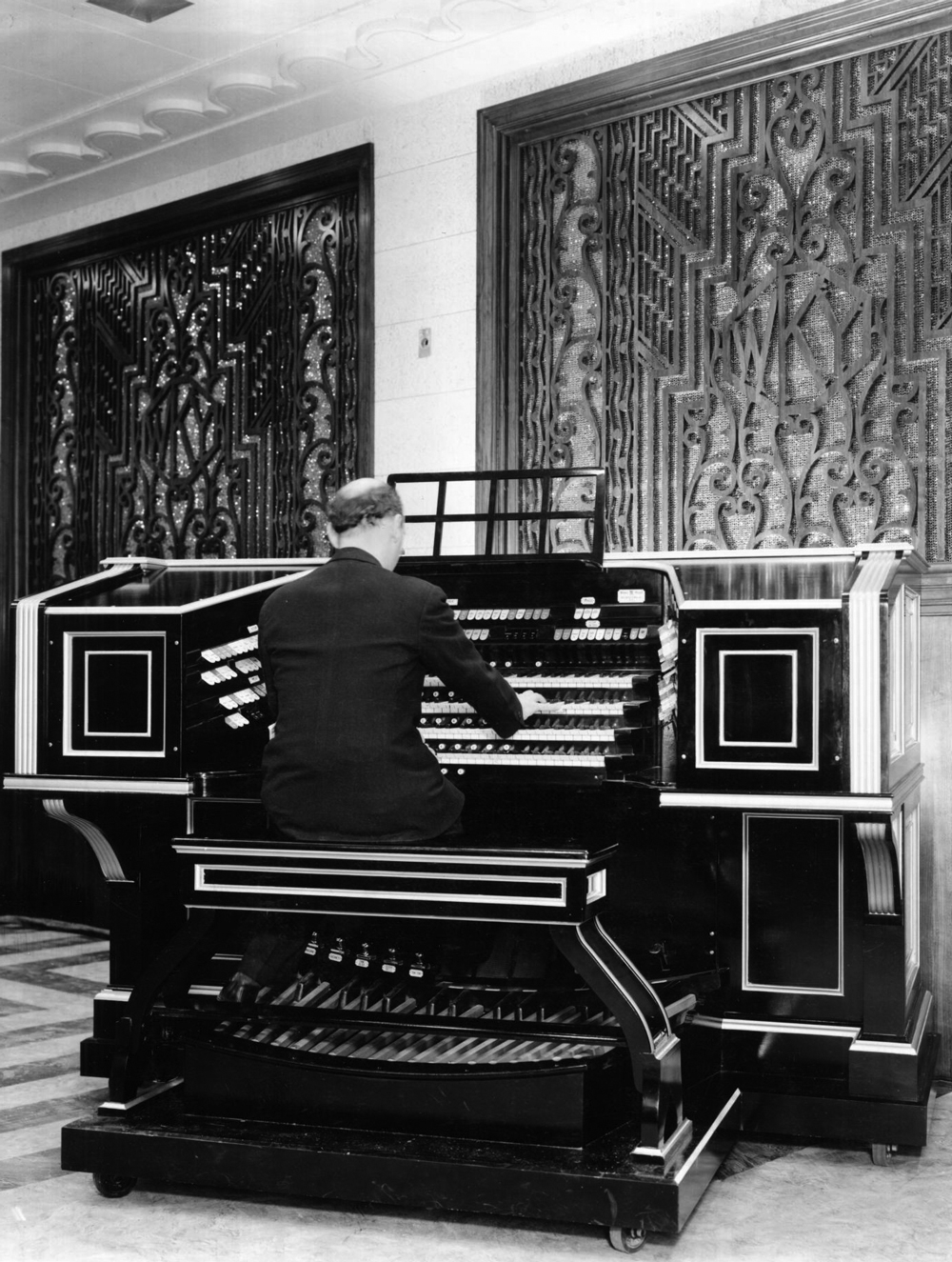
The Kilgen Organ at WKY studios in the Skirvin Hotel (19630.63.11, Oklahoma Publishing Company - WKY Radio and Television Collection, OHS)

Audio point: Woody the Birthday Horse
To most Oklahoma City kids of the 1960s, Woody the Birthday Horse was the most famous horse in the state. Children celebrating their birthday on the Circle 4 Ranch show were given a special seat on Woody’s back. Circle 4 Ranch was an afterschool children’s program on Oklahoma City’s WKY-TV in the 1950s and 1960s. Twenty-five children per day attended the weekday show, which was so popular that parents had to book a reservation a year and a half in advance!

Audio point: Pente game and a prosthesis
This exhibit is just a small example of all of the wonderful, innovative Made in Oklahoma items produced by the people of our state. Two of our favorites include the Pente game and the prosthesis.
Pente, which is Greek meaning “five,” is an original adaptation of three popular games and was created by Hideaway Pizza employee and Oklahoma State University student Gary Gabrel. Gabrel began his own marketing company that sold several million sets of the game. He sold Pente to Parker Brothers in 1984.
Near the game, you will see a below-knee prosthesis that was made by Scott Sabolich Prosthetics and Research. The composite spring in this prosthetic foot provides optimal shock absorption that reduces impact, thus enhancing control and comfort for the wearer. The top of the prosthesis is customizable to reflect the personality of the user. This model features a world map with a star over Oklahoma with rays extending to Sabolich service locations. Sabolich is known for the motto “Rebuilding lives one person at a time.” As a leader in prosthetics, 40 percent of its clients travel great distances to pursue their prosthetic care at the Oklahoma facility.
West Atrium Gallery 1

Audio point: Research Center
Did you know that the Oklahoma History Center is the only place in the world that is a Smithsonian affiliate, an affiliate of the National Archives, and an accredited institution of the American Alliance of Museums?
The John and Eleanor Kirkpatrick Research Center is open to the public Tuesday through Saturday, free of charge, and is a valuable repository for books, photographs, manuscripts, newspapers, audio, and video pertaining to American Indians, genealogy, and Oklahoma history.
ONEOK, Inc. Gallery 1

Audio point: Hide bag
The ONEOK, Inc. Gallery features the exhibit We Are Who We Were. It represents all 38 federally recognized American Indian tribes currently headquartered in Oklahoma and offers visitors the opportunity to explore the historic past of the Native peoples of Oklahoma as well as experience contemporary American Indian cultures. Using the 20th-century American Indian experiences as a bridge between the past and the present, the exhibit offers artifacts, tribal music, photographs, American Indian art, and oral histories from the indigenous people of Oklahoma.
The hide bag you see here is either made out of deer or antelope and contains pumpkin seeds. How do we know they are pumpkin seeds? The size of these seeds corresponds to current day pumpkins and is larger than other squash seeds.
Corn, pumpkins, and beans were common crops planted by the Wichita tribe, indigenous to Oklahoma. Gardens were carefully cultivated, and seeds were dried and stored to prepare for the next growing season. Pumpkin flesh was cut into long strips and sun-dried before being woven into mats, which could be folded and stored for later use. Pumpkin mats were often traded to the Comanches or Kiowas for dried buffalo meat. Dried corn and pumpkin were used in meat soups or boiled for side dishes.
Preserved foods were stored in buffalo-hide bags in underground cache pits until they were needed, whether it was later in the year or when the harvest was poor, and food was scarce.

Audio point: Firefighter suit
Since 1988 the Cherokee Nation Firedancers and Forest Firefighter organization has provided a valuable service in the suppression of wildfires nationwide. The Firedancers operate under the auspices of the United States Forest Service. They are one of 12 tribal firefighting groups in Oklahoma. Cherokee Firedancers have earned outstanding reputations and the respect of all wildland fire management agencies throughout the United States. They have helped in times of national need like the 2003 Shuttle Columbia disaster and Hurricane Katrina. In addition to other rigorous training, the pack test to become a Cherokee Firedancer is a 45-minute, three-mile hike carrying 45 pounds on your back.

Audio point: Certificate of Friendship, peace medals, and a letter
The printed certificate you see here is called a commission or a parole, which is the French word for promise. A parole guaranteed universal peace and friendship between the recipient and all other persons represented by the signatures. It also attested, implicitly, that the recipient was an official representative and chief of his band or tribe, a false and unfair assumption that remained at the core of troubled Indian-white relations for most of the 19th century.
The three peace medals represent two of the five types of medals carried by the Lewis and Clark Expedition as they traveled up the Missouri River. The two large medals seen here represent the largest size carried on the trip. The third medal represents the smallest size category that featured the bust of President Thomas Jefferson.
By far the most important aspect of these gifts was an understanding that the parties would maintain peaceable relationships with one another and with their neighbors, in the interest of free and profitable commerce. Some Indian leaders believed that a medal was a guarantee of the giver’s military support against their own Native rivals and enemies.

Audio point: Stickball and turtle-shell shakers
Stickball sticks and balls have been made by Chickasaw men for as long as the game has been played. Two kinds of games are played today by Chickasaw people. One is a social game played by men and women around a single pole. Women can use their hands during the game, while men use the sticks. The sticks are made from hickory, pecan, or ash wood and have a cup, shoulder, and handle. The other is the east-west game, played only by men, with two goalposts. These stickball sticks were brought to Oklahoma from Mississippi in 1832.
Turtle-shell shakers, like you see here, have been worn by Chickasaw women for as long as Chickasaw people can remember. The turtle shells, filled with pebbles, provide the rhythmic accompaniment to Chickasaw stomp dancing and social songs. Today some Chickasaw women wear shakers made of condensed milk cans filled with pebbles.
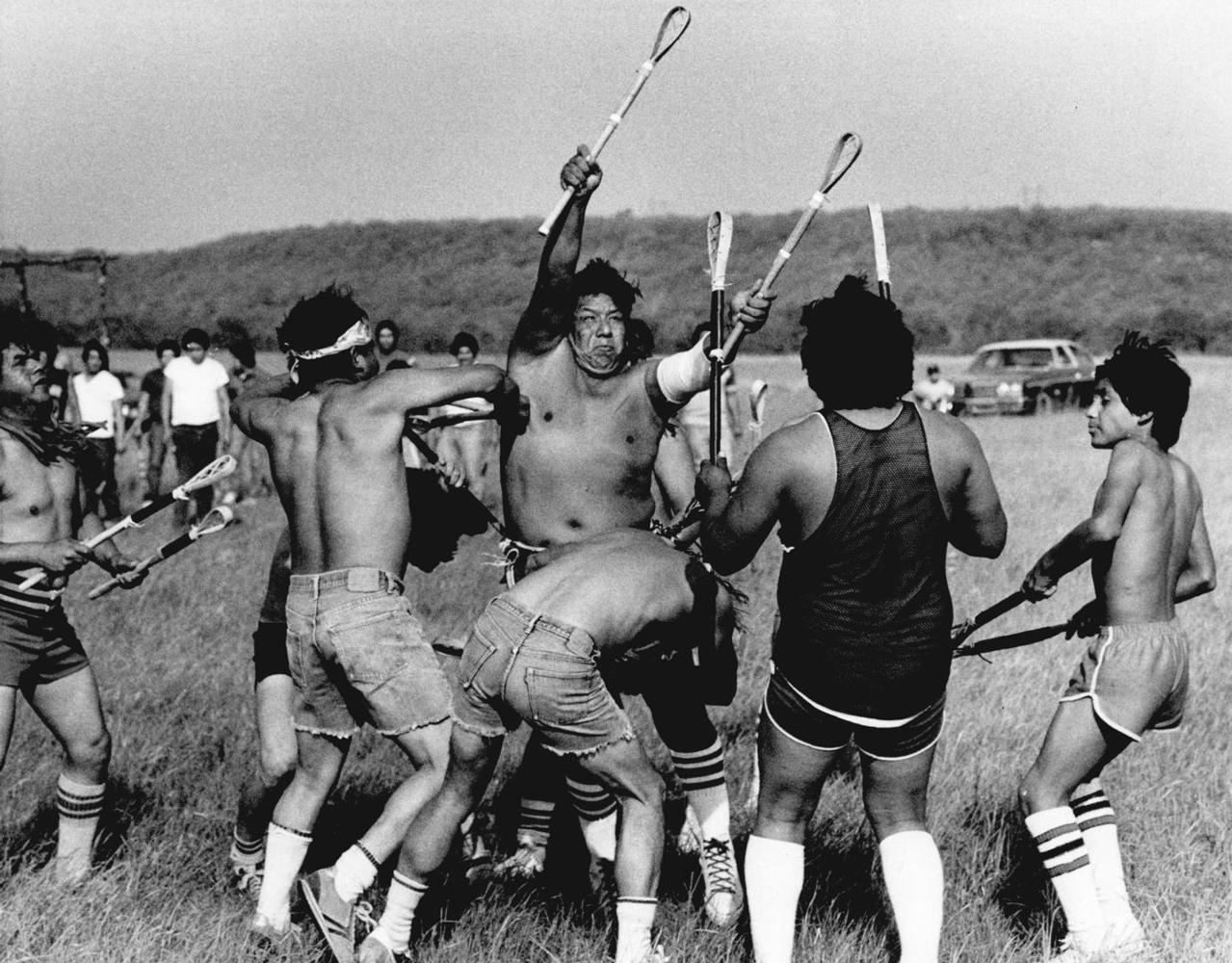
Stickball game, 1983 (2012.201.B1209.0599, Oklahoma Publishing Company Photography Collection, OHS)
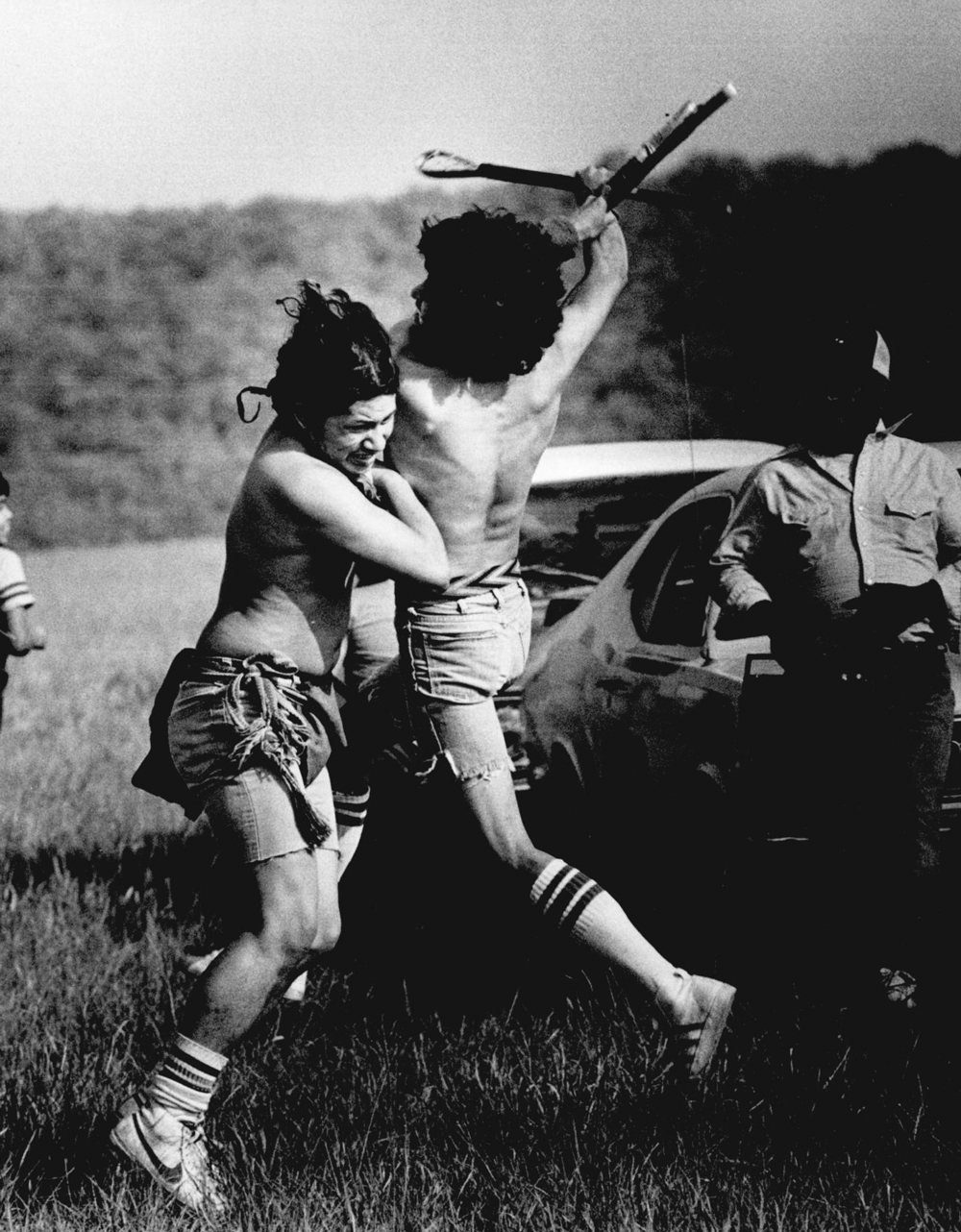
Stickball players collide, 1983 (2012.201.B1209.0601, Oklahoma Publishing Company Photography Collection, OHS)
Gaylord Special Exhibit Gallery 1

Audio point: Launch to Landing: Oklahomans and Space Apollo Command Module
This Apollo command module is largely the same as those Apollo command modules used during the lunar missions. It carried the final Skylab crew of astronauts—Gerald Carr (commander), Edward Gibson (science pilot), and William Pogue (pilot)—into space to live and work in the Skylab Orbiting Laboratory, or Space Station. The final Skylab mission was the longest mission flown by any Apollo command module. It flew from November 16, 1973, to February 8, 1974, for 84 days in space.
The command module also serves as the reentry capsule, which is used to return the astronauts to Earth. This one is 12 feet, 10 inches in diameter. As this object blasts through Earth’s atmosphere, it heats up to extremely high temperatures. The surface temperature of a capsule can reach 1,480°C (2,700°F)! The heat shield is designed to melt and then vaporize, which removes the heat. Since this is essentially a free-falling object, it either comes to rest on land or at sea by parachute.
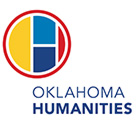
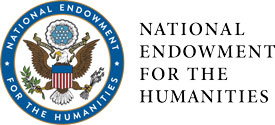
This program is sponsored in part by Oklahoma Humanities (OH) and the National Endowment for the Humanities (NEH). Any views, findings, conclusions, or recommendations expressed in this program do not necessarily represent those of OH or NEH.